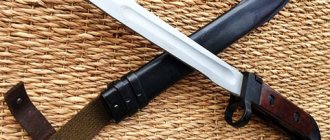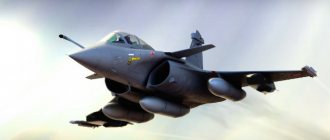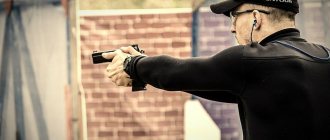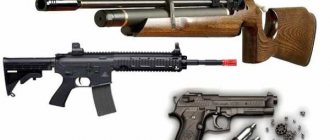Not only schoolchildren are interested in the technical data of manned aircraft, regardless of their purpose - military or civilian. If the characteristics of famous supersonic fighter-interceptors such as the SU-27 or MiG-31 are known to many, then the simple question “What is the average speed of a helicopter?” often perplexes. It is worth trying to summarize information about this class of air vehicles, which differ greatly from each other in dimensions, purpose, load capacity, and other parameters.
Lower threshold
When compiling the top high-speed rotary-wing aircraft, it would be reasonable to limit the “threshold of entry” into it by the speed developed in flight at 300 km/h. However, it would not be amiss to briefly mention helicopters, which, although not included in this list, also have impressive flight performance.
The Boeing CH-47 Chinook is an American military transport helicopter that has been in service with the US Air Force since the Vietnam War. Put into service back in 1962, the model has been modernized several times and continues to be used in various military operations around the globe. The latest conflicts involving this twin-propeller vehicle include military operations in Iraq and Afghanistan. Despite its impressive dimensions and outward appearance, this military helicopter is capable of flying at a speed of 285 km/h if necessary.
Boeing CH-47, Photo: pixabay.com
Created by the European concern with joint Franco-German capital Eurocopter, the military multi-purpose helicopter NH90 is capable of accelerating to 291 km/h. Built in 1995, the vehicle is in service in 14 countries that are part of the North Atlantic Alliance. Suitable for operation in harsh weather conditions both on land and at sea - a special modification of the helicopter has been developed for use in the navy.
Designed back in the 70s and put into service in 1980, the heavy multi-purpose transport Mi-26 continues to serve in the ranks of the Russian Air Force and 15 other countries around the world. Thanks to its excellent flight characteristics, allowing it to reach speeds of up to 295 km/h, and relatively cheap operation, this model continues to be in demand both in the version for military use and in purely civilian versions.
NHI NH90 | Speed 300 km/h
NHI NH 90 is one of the fastest multi-role helicopters developed by Eurocopter in 1995. During tests of the air vehicle, indicators of 300 km/h were obtained. Today, the NHI NH90 is operated and in service by more than a dozen countries, including France, Germany, Italy, Sweden, etc. The cost of one unit today is about 45 million US dollars. Currently, aircraft are produced by Agusta/Westland and Stork Fokker.
Mi-28N
Developed by the Mil Design Bureau and entered into service in 2013, the Mi-28N, in Russia called the “Night Hunter”, and according to NATO classification under the formidable call sign “Devastator”, has already proven itself as a reliable combat attack helicopter during the anti-terrorist operation in Syria.
Mi-28N, Photo: mil.ru
The development of the Mi-28, which was headed by the then general designer of the Moscow Helicopter Plant. The Mark Weinberg mile began back in the 78th year of the last century as part of a competition with the Kamov design bureau, and 4 years later the first prototype took off. Since then, the helicopter design has undergone many modifications and only at the beginning of the new millennium it took on its final form.
The crew of the helicopter, capable of taking off with a combat load of 2.5 tons, consists of two pilots. The cruising speed of the model, which, in addition to the Russian army, is also in service in Iraq and Algeria, is 265 km/h, but the car can accelerate to 300 km/h in flight. “Night Hunter” is not a helicopter that flies only in a straight line : The rotorcraft is capable of performing aerobatic maneuvers, including a barrel roll, Nesterov loop and Immelmann flip.
HELICOPTER AUGUSTA 105 UP TO 4 PASSENGERS
One of the first helicopter models produced by the Italian company AugustaWestland, which previously produced Bell and Sikorsky helicopter models under license. The main operator is the Italian army. Accommodates up to 4 people. High level of comfort, elegance and safety, spacious and stylish interior, low noise and vibration levels. Used by top officials of the Russian Federation. Reliability, a spacious fuel tank, and high cruising speed make this helicopter a leader in its segment for moving from one point to another. In the Russian Federation, an AW 139 assembly plant was created in Tomilino, Moscow region. Crew: 1-2, Number of passengers: 4, engines: 2 gas turbine engines, cruising speed: 250 km/h, flight range: 600-965 km, flight time: 2, 5-5 hours, empty weight: 1570 kg.
| HELICOPTER | PASSENGER. PLACE |
| MI – 8 standard | up to 20 seats |
| MI – 8 VIP | up to 10 seats |
| Eurocopter EC130 | up to 6 seats |
| Eurocopter As 355 | up to 4 seats |
| Bell 206 | up to 4 seats |
| Bell 407 | up to 6 seats |
| Bell 429 | up to 7 seats |
| Robinson - 44 | up to 3 places |
| Model | Maximum number of people | Range of flight | Cruising speed | Flight time | Ceiling |
| MI-8 | 20 | 550 | 225 | 4 hours | 4500 |
| MI-8 VIP | 10 | 550 | 225 | 4 hours | 4500 |
| Eurocopter EC130 | 6 | 644 | 287 | 4 hours | 7010 |
| Eurocopter AS355 | 4 | 720 | 278 | 4 hours 35 minutes | 6100 |
| Bell 206 | 4 | 721 | 213 | 4 hours 30 minutes | 4025 |
| Bell 407 | 6 | 611 | 240 | 3 hours 42 minutes | 6100 |
| Bell 429 | 7 | 710 | 270 | 4 hours 27 minutes | 5698 |
| Augusta 105 | 4 | 964 | 285 | 5 hours 04 minutes | 5974 |
| Robinson 44 | 3 | 650 | 210 | 3 hours 30 minutes | 4250 |
Maintenance of all helicopters is carried out in accordance with the requirements of manufacturers and aviation regulations of the Russian Federation.
Helicopter rental and excursions in St. Petersburg
More details
Conditions for booking and ordering a helicopter
More details
Helicopter models
More details
Helipads of St. Petersburg
More details
VIP service
More details
Nimble family
It is possible to place 3 cars at once in the next place in the top - the speed indicators of these models are close, if not identical, and all three helicopters were created by one organization - the Anglo-Italian company AgustaWestland.
The first model to consider, developed and manufactured by this international concern, is the AW101 helicopter, also designated Merlin, in service in Denmark, Portugal, England and the USA. Moreover, the use of the machine is not limited only to military purposes - various modifications have been developed, including civilian ones. The crew consists of 2 people. Payload weight is up to 5.5 tons. Capable of reaching speeds of up to 309 km/h.
AW101, photo: ru.m.wikipedia.org
The next brainchild of AgustaWestland, the multi-role AW139, in the creation of which the American company Bell Helicopters also participated, first took to the air in February 2001. And as of 2020, it is actively used in more than 20 countries. Operators of this model also include Russia, with which the concern has concluded a cooperation agreement on the production of civilian versions of this aircraft for the needs of Russian state corporations. The helicopter is controlled by 2 pilots, the cabin is designed for 6–15 people, depending on the specific configuration. The speed limit is 310 km/h.
The AW109 model with the cute call sign Hirundo, which means “swallow” in translation, was created back in the 60s of the last century, long before the merger of the Italian company Agusta with a division specializing in helicopter manufacturing of the English GKN plc. And it fully corresponds to its own affectionate nickname - the speed that this machine, which is still used by the military and civil services of Italy, is capable of reaching is 311 km/h, and the payload is 3 tons.
Mi-24
One of the most famous helicopters in the world and the second most common, which is named “Lan” in the NATO classification, is the Mi-24, which, since its first flight in September 1969, has taken part in a whole string of armed conflicts across the planet. The rotorcraft, developed by the Mil Design Bureau half a century ago, is still actively used by the armed forces of many countries - modifications of the attack helicopter are used by more than 60 countries.
Mi-24, photo: commons.wikimedia.org
The Mi-24 project, the creation of which was initiated by a resolution of the Council of Ministers of the Soviet Union dated May 6, 1968, took into account developments previously used in the design of previous models created by the design bureau. At the time of its production, the Soviet helicopter, more familiar to residents of Russia and the CIS under the aggressive nickname “Crocodile”, became the second in the world intended exclusively for combat use - the first was the American Cobra - AH-1.
Robinson Aircraft Performance
Operational parameters include the dimensions and weight of the helicopter, the number of passenger seats, and payload capacity.
The dimensions and weight of Robinson helicopters are shown in the table.
| Parameter/Type | R22 | R44 | R66 |
| Fuselage length | 6.57 m | 9.06 m | 9 m |
| Fuselage width | 1.11 m | 2.16 m* | 2.16 m * |
| Fuselage height | 1.75 m | 3.27 m | 3.48 m |
| Screw diameter | 7.67 m | 10.04 m | 10.6 m |
| Empty helicopter weight | 320 kg | 720 kg | 580 kg |
| Maximum take-off weight | 620 kg | 1089 kg | 1225 kg |
*Measured by chassis track width
The number of seats in the R22, R44 and R66 models is 2, 4 and 5, respectively. Aircraft have the following payload capacity:
- R22 - 230 kg.
- R44 Raven II - 380 kg.
- R66 - 580 kg.
Thanks to its powerful gas turbine engine, the Robinson R66 helicopter is superior in lifting capacity to both other types of Robinson helicopters and many rotorcraft of the same class from other manufacturers.
Ka-52
The Russian Ka-52 Alligator combat helicopter, designed for reconnaissance and destruction of enemy ground vehicles, including armored ones, entered the Russian Armed Forces in 2011. And in 2015, a modification of a ship-based vehicle took off for the first time. As of 2022, Alligator operators are only two countries in the world - Russia and Egypt, with which an agreement was concluded for the production of 46 units of equipment for subsequent transfer.
Ka-52, photo: mil.ru
Work on the project of a new generation rotary-wing aircraft began at Kamov OJSC in the mid-90s. The chief designer of the prototype was the president of the enterprise, Sergei Viktorovich Mikheev. The creation of the helicopter was carried out using developments that had previously been used to create another machine with a coaxial rotor arrangement, which is also included in this top - the Ka-50.
The Ka-52 has already taken part in battles on the territory of the Syrian Arab Republic and, despite some technical problems that led to the crash of one side, has proven itself to be a highly effective means of suppressing enemy ground forces. The helicopter crew consists of 2 people. The car is capable of accelerating in a horizontal plane up to 350 km/h.
Eurocopter As 355 up to 4 passengers
Eurocopter AS355 NP made in France is the latest modification of the successful Ecureuil family of twin-engine gas turbine helicopters. Can continue climbing and level flight even if one engine fails. The machine is ideally adapted to the harsh Russian conditions and can be operated at temperatures from – 40 to + 35 ° C. The passenger cabin can comfortably accommodate from three to six people. Maximum speed 278 km. hours, non-stop flight range 470 – 720 km, maximum flight altitude 6100 m, maximum flight time 04:35. Interior: length 0.90 m, width 1.65 m, height 1.30 m. Helicopter size: length 10.93 m, height 3.14 m, main rotor diameter 10.69 m.
Ka-50
The Ka-50 attack helicopter, which served as a prototype for the creation of the Alligator, 15 years earlier from the pen of Sergei Mikheev, became the first land-based rotorcraft with a coaxial rotor arrangement. In Western terminology, this Soviet machine, which was in service in the Russian army for 15 years after the collapse of the USSR, is known under the names “Deceiver” and “Werewolf”. For Russians and residents of the CIS, another name is much more familiar - “Black Shark”.
Ka-50, photo: mil.ru
The Council of Ministers of the USSR decided to begin the creation of a new type of rotary-wing combat vehicle, designed to destroy manpower and equipment, including under adverse weather conditions, in December 1976. The task assigned to the two design bureaus, Mil and Kamov, implied the design of a machine that was not inferior to and partly superior to the latest American development in the field of helicopter engineering - the AH-64 Apache. As a result, the concept of a battlefield helicopter, fundamentally different from the ideas of the foreign military industry, turned out to be truly innovative for that time.
AH-64
The already mentioned Attack Helicopter 64 “Apache”, named after one of the tribes of the indigenous inhabitants of the North American continent, ranks first in the world in terms of prevalence among attack helicopters and is in service with 15 armies of the planet, including the Israeli Air Force and the Japanese Self-Defense Forces.
Since its inception, this product of the American military industry, designed by Hughes Helicopters and recognized as the best US military weapon, has managed to take part in a number of local conflicts of various sizes, starting with the US Army’s invasion of Panama in 1989 and ending with the Yemen operation.
AH-64, photo: ru.wikipedia.org
The decision to begin work on creating a model capable of replacing the Cobra and the expensive Cheyenne, which did not live up to expectations, was made in 1973 at a congress of the non-governmental lobbying organization American Legion, which decided to support the idea of developing a promising aircraft. After 2 years, the prototype took off, but the helicopter entered service only 9 years later.
The Apache has remained the main combat helicopter of the US Army since the mid-80s of the last century to this day - no one has taken the AH-64 out of production, because the machine continues to completely suit the military in terms of tactical, technical characteristics and firepower. And the speed characteristics allow the helicopter to quickly get to the desired point to support ground forces - the aircraft is capable of accelerating up to 365 km/h.
Is it possible to make a cult out of helicopter speed?
“500 kilometers per hour without stalling” 08/07/2017
“Russia will receive two new helicopters—civilian and military—in the coming years. The know-how of our helicopter manufacturers will allow them to reach record speeds and squeeze out competitors in the global market.
“One of them (the civil version - “Stimul”) will be made according to the traditional aerodynamic design, with one main rotor, and the other - coaxially, with two propellers,” Sergei Emelyanov, director of the aviation industry department of the Ministry of Industry and Trade, told reporters on Thursday at the HeliRussia exhibition . According to the official, during the research work under the PSV program, two problems were identified: blades and additional propulsors - engine energy converters.”
“Emelya’s shallows are your week!” (proverb)
“It has already been determined that with a car with one propeller it is possible to reach a speed of 450 kilometers per hour. But we can’t get any higher yet,” says Emelyanov. — As for the coaxial scheme, here the Kamov Design Bureau is working on the machine at a speed of over 500 kilometers per hour. This is being done in the interests of the Ministry of Defense.”
“The legend is fresh, but hard to believe” (Chatsky).
450k/h, let alone “over 500k/h” = ???
Helicopter cruising speeds are currently 250-300kph. and when the speed increases above 350 k/h, the efficiency of the horizontal component of the rotor thrust sharply drops. Let me remind you that the speed record of the Mi-24 is 368k/h.
In the Mi-X1 project from the designers of the Moscow Helicopter Plant, the tail rotor in flight was supposed to act as a propulsion device and then the helicopter would “be able” to accelerate to a speed of 520 k/h. But here too - “noodles”!
Why?
It's simple: the peripheral speed of rotation of the end of the main rotor blade of the Mi-24 helicopter = 217 m/s, which corresponds to a speed of 780 km/h.
At helicopter flight speed =500k/h. at the left half of the main rotor (counter flow) the total speed will be: 780k/h + 500k/h. = 1280k/h.
On the right side, the incoming air flow will be favorable and, accordingly: 780k/h - 500k/h. = 280k/h, i.e. the difference in speed of the left and right sides of the helicopter's main rotor will be: 1270k/h – 270k/h. = 1000k/h.
Accordingly, the difference in the lifting forces of the left and right sides of the main rotor at such a speed will be such that an uncontrolled roll will appear much earlier than 450 k/h, which even the Milev ace - tester Gurgen Karapetyan cannot cope with!
In coaxial helicopters, two rotors rotate in opposite directions, which stabilizes their flight: the thrusts of the rotors on opposite sides will balance each other. But even for the coaxial Ka-92 helicopter, according to the statement of the general designer S.V. Mikheev, the maximum speed is expected to be up to 460 kph. (According to S. Emelyanov - “over 500k/h”), and cruising speed = 420-430 km/h. In addition, this project provides for a rear propulsive (pushing) propeller, rigid rotor blades and a reduction in their speed N.V. as the speed increases, which makes it possible to move the boundaries of flow stall from the ends of the blades towards higher flight speeds.
The Mi-24 flying laboratory does not have such an opportunity due to the lack of a pusher propeller - and this is another problem in increasing the cruising speed of a helicopter, so there can be no talk of 450 km/h.
It is also puzzling that the mass production of long-outdated Mi-8s continues with manic persistence,
And this despite the fact that since 2001 there has been a real opportunity to replace it with the more advanced Ka-32-10 helicopter, and today with the even more advanced Ka-32-10AG.
It also does not fit with reality that instead of the outstanding three-time winner of the attack Ka-50 “Black Shark”, our Army continues to be supplied with a crude Mi-28N, which even in Syria caused a disaster, killing two top-class pilots at once.
One must think that it was not because of a good life that Defense Minister S.K. Shoigu allowed girls to be admitted to the Krasnodar Flight School. The service of a fighter pilot is clearly not a woman’s job, and for this reason alone the “Black Shark” combat helicopter should represent an invaluable find for the State. And the beautiful words addressed to the “Night Hunter” are, for our reassurance, a report to Vashobkom: “Another legendary representative of the “air cavalry” - the Mi-28N “Night Hunter” - is successfully undergoing modernization.
Since when did the Mi-28 become “legendary”: in less than 10 years it has had five “hard landings” due to design flaws, three of which resulted in human casualties. This is probably why the commander-in-chief of the Aerospace Forces is looking forward to a modernized version of this, excuse the expression, “legendary” helicopter:
“According to Bondarev, the modernized Mi-28NM “Night Hunter” helicopter with dual controls will begin serially entering the troops in 2018. “There is not a single lag on the Mi-28NM. This is a wonderful helicopter, we really need it” (TASS. Army and defense industry, July 23).
“We really need him.” And who wants “US”?
The state and, first of all, captains and lieutenants need the Ka-50 “Black Shark”, Ka-52 “Alligator” and Ka-32-10AG instead of the long and hopelessly outdated Mi-8 and Mi-28!
I believe that the Mi-28NM will have its gearboxes modified, the fault of which it crashed, which will allow the restrictions on engine power to be lifted. But in terms of its combat capabilities, and even more so in terms of maneuverability, it will not be able to reach the level of the “Black Shark”, a tail rotor with a tail boom will not allow it, especially since the Ka-50/52 has been flying on these engines for a long time, so all the praises to the “Night Hunter” “like “this is a beautiful helicopter” - from the Evil One!
Addition of 400 hp. to the existing 4400hp. will increase its combat capabilities little, as will increasing the firing range of guided anti-tank missiles from 6 km. up to 8 km. By this time, the Ka-52 will operate with Chrysanthemum ATGMs already from 20 km, which meets the requirements of modern warfare, meaning not outdated tanks near Palmyra, but regular troops with modern weapons, whose air defense range of tank groups is much larger than Soviet tanks 40- years ago, but which have already surrounded us from all sides!
By the way, it wouldn’t be a bad idea to equip the “legendary” Mi-28N and “NM” with ejection seats like the Ka-50/52 helicopters, but let’s look at the history of its loss to the “Black Shark”:
“In August 1986, State comparative flight tests of the B-80 and Mi-28 were completed, the results of which showed that the Kamov machine was superior to the Milevsky in higher combat survivability, better flight performance and wider weapon capabilities. An important advantage of the B-80 was recognized as its “single-seat” (a circumstance that initially caused misunderstanding and even rejection, because all combat helicopters in the world were at least two-seat), since it saved the weight of the vehicle, reduced the cost of training crews and possible losses on the battlefield, and the functions of the navigator-operator were successfully taken over by the automation of the Shkval-V laser-television sighting system and the Whirlwind ATGM (aviation: helicopters: KA-50 [Free Encyclopedia...).
To launch the Mi-28 series, the son of the famous designer I. Sikorsky, S. Sikorsky, flew from the USA to Russia, which shows how strong the Ka-50 is and how unsuccessful the Mi-28 is. Unfortunately, ex-Minister of Defense S. Ivanov in fact found himself on the side of the American: he removed the “Black Sharks” from service and instead installed the losing and crude Mi-28Ns, which were also weakly maneuverable in comparison with the “Black Shark”.
What does it mean? Let’s say, if necessary, a Ka-50 pilot is capable of instantly turning the “Black Shark” 180 degrees at any speed. around the axis and meet the enemy in a more advantageous position for him. In such a situation, the Mi helicopter can only perform a turn, which entails the loss of precious time. The Mi-28NM will not be able to jump to a height of 1500m. with a vertical speed = 30 m/s, as the Ka-50 “Black Shark” did in Chechnya (From the story of army test pilot Colonel A. Rudykh).
And the aura of “legendary” for helicopters from the MVZ design bureau is created by the liberal media even before they go into production:
“The armed forces will receive a “helicopter of the future” by 2018...A fundamentally new modification of the Mi-28N attack helicopter (“Night Hunter”) should enter service with the troops at the end of 2022 – beginning of 2018. Tests of the Mi-28NM have just begun, and it is already being called the “helicopter of the future” and they say that the new product is significantly superior to the famous and most widespread AH-64 Apache in the world” (politrussia.com›Armed Forces)
At an international competition in India, the “Night Hunter” lost to the American “Apache” outright and not least in terms of armament, that’s all its “legendary” in addition to its three-time loss to the “Black Shark”!
And here’s how Mi helicopters fight in Syria: “x-true info” – “Combat helicopters and planes almost continuously flew over the heads of the enemies and struck at them along the entire formed front. Dozens of terrorists were eliminated by missiles and bombs...” “From a cannon to the sparrows!” (proverb).
The fact that planes “fly over the heads of enemies” is clear to me, but helicopters in this case are designed to hover at a certain altitude and from there work on terrorists with targeted fire, and when they work on the battlefield like airplanes, the end result is theirs is scanty: of the five thousand militants who came from Iraq, only “Dozens of terrorists” were destroyed. In Afghanistan, supersonic fighter-bombers were nicknamed “WHISTLES” for such work.
The Americans have it all down to science this time:
“...the helicopter fires either at a very low speed or even hovering. Moreover, the helicopter has a fairly high altitude, several hundred meters... If the militants had heavy machine guns like DShK or Zu-23-2 anti-aircraft guns, it is unlikely that the Apache would be able to afford such a pleasure" ("Crocodiles" without "alligators" "VPK).
The lethal firing altitude of Zu-23-2 anti-aircraft guns is up to 1500m, so the hover altitude in this case is required above 1500m, which with a full combat load is clearly beyond the capabilities of the combat Mi-24/28, so they fly “over the heads of the enemy”, so and the efficiency of their work is worse than ever!
Now I’ll fantasize about the high-speed theme of the Ka-22 rotorcraft, it’s flying “today.” But first, about the carrying capacity.
It is generally accepted that the popular Mi-6 helicopter has an average load of 8 tons. Structurally, the Ka-22 was one and a half tons lighter with an equal maximum take-off weight of 42.5 tons, hence the average load of the Ka-22 even then would have been = 9.5 tons. The D-25V engine has not been produced for a long time and instead of it today there would be two TV7-117V with a total take-off power of 5600 hp, which from the point of view of flight safety is extremely important both for the Arctic and for Army aviation. At the same time, the weight of one D-25V engine = 1300 kg, and two TV7-117V = 1600 kg or 700 kg. easier, i.e. four TV7-117 are 1400 kg lighter than two D-25 and the average load of the Ka-22 would increase accordingly: 9.5t + 1.4t = 10.9t.
The total hourly fuel consumption for two D-25V = 2200 kg/hour, for four TV7-117 = 1600 kg, which is 600 kg less and the average load per flight hour would increase: 10.9 t + 600 kg. = 11.5t. You should also add 600kg. due to 200 hp more total engine power and the result is 12t. This (12 tons) could be the average load of the Ka-22 rotorcraft today, according to the most conservative estimates.
As for the cruising speed of the “improved” Ka-22, it should be considered at least 340k/h. But the speed qualities of any aircraft are interesting in comparison with, say, the Mi-26 helicopter: “It was a three-hour flight from Tiksi to Kotelny, most of it was over the Arctic Ocean,” said Mi-26 commander Alexey Pavlov.” (How the territory of Russia became an island in the Laptev Sea. gazeta.ru.2014/10/11).
For Ka-22 at speed = 340k/h. it would take a total of time = 2h15min. Time savings = 45 min, i.e. round trip - 1 hour 30 minutes, during which the rotorcraft would save 2400 kg of fuel. and as a result, its payload would be increased by the same amount. This is why higher cruising speed is needed.
It is also, for obvious reasons, needed by combat helicopters, but everything has its limits, so for a cruising speed of 400 km/h, expensive complications will be required in the helicopter design and, first of all, in the main rotor. Such blades cannot be used on the Mi-24, because it cannot produce a speed of more than 370-380k/h due to the long-outdated design of the classical design. And it can achieve this speed only at maximum engine power and at maximum blade mounting angles, which is far from cruising mode, when the peculiarities of N.V. operation are studied. this mode.
Unfortunately, the designers of the cost center have made a cult-loophole out of helicopter speed, with the help of which they get good money from the State, without even trying to launch their “breakthrough projects” (Mi-X1; PSV “Rachel”) into development due to their insolvency, but their The “flying laboratory” is just a cosmetic modernization of the half-century-old Mi-24 helicopter, on which, first, military representative Colonel E. Poluyanov “reached” a speed of 405 k/h, and then A. Boginsky himself: “A flying laboratory for the creation of a promising high-speed helicopter ( PSV) based on the Mi-24 reached a speed of about 400 kilometers per hour, Andrei Boginsky, head of the Russian Helicopters holding company, told reporters on Monday (vpk.name June 19, 2017).
The Ka-22 has tractor propellers for this speed, and in flight the power of the engines smoothly flows from the main rotors to the pulling ones as the speed increases, and as the speed increases, the lifting force of the wings also increases, removing the load from the main rotors!
Vitaly Belyaev.
Eurocopter X3
The status of the fastest helicopter in the world was given to an experimental model of a hybrid design that combines a rotor rotating in a horizontal plane with two 5-blade traction propellers. Designed by the Franco-German company Eurocopter, recently renamed Airbus Helicopters, the X3 heliplane, whose first flight took place in 2010, was originally designed to accelerate to 410 km/h. However, after 3 years, the prototype showed that it was capable of more, setting a horizontal flight speed record of 472 km/h.
Eurocopter X3, photo: ru.m.wikipedia.org
As of 2022, the rotorcraft project, which requires serious financial investments, has not interested customers. The only completed copy stands in the Aviation and Space Museum of the city of Paris, although work on fine-tuning the design, which engineers consider promising, continues.
It was also announced a couple of years ago that work was underway in Russia to create an ultra-fast combat helicopter capable of reaching speeds of over 700 km/h, the design of which was being worked on at the National Helicopter Manufacturing Center, which arose as a result of the merger of two design bureaus - Mil and Kamov. However, there is currently no exact information about when the first prototype will take off and at what stage the project is at.
Eurocopter EC130 up to 6 passengers
This is a single-engine helicopter with a gas turbine engine manufactured by Eurocopter (France). The helicopter has a tail rotor and is considered one of the quietest helicopters. Number of doors: 4. Duration of non-stop flight 4 hours, flight range 644 km, maximum speed 287 km. hour. They have excellent visibility and low noise levels.











